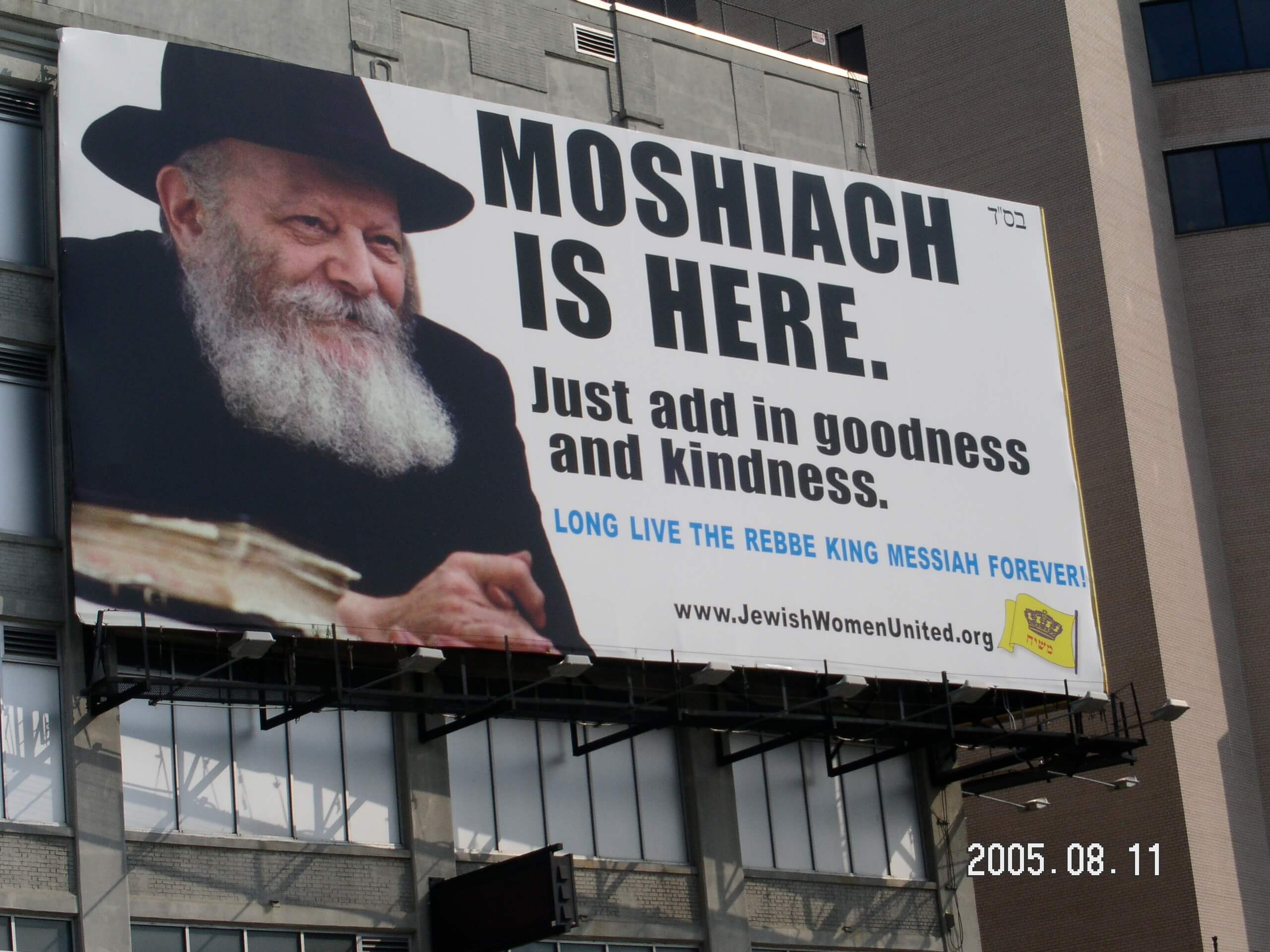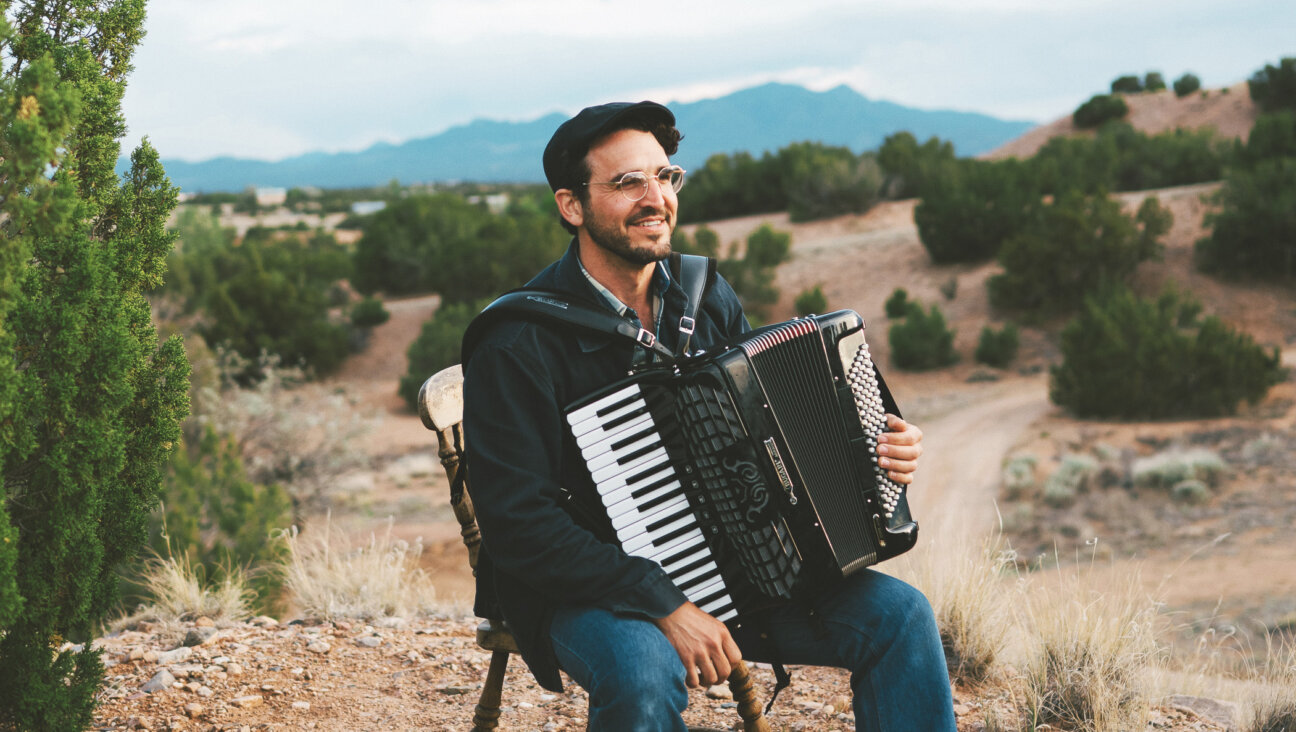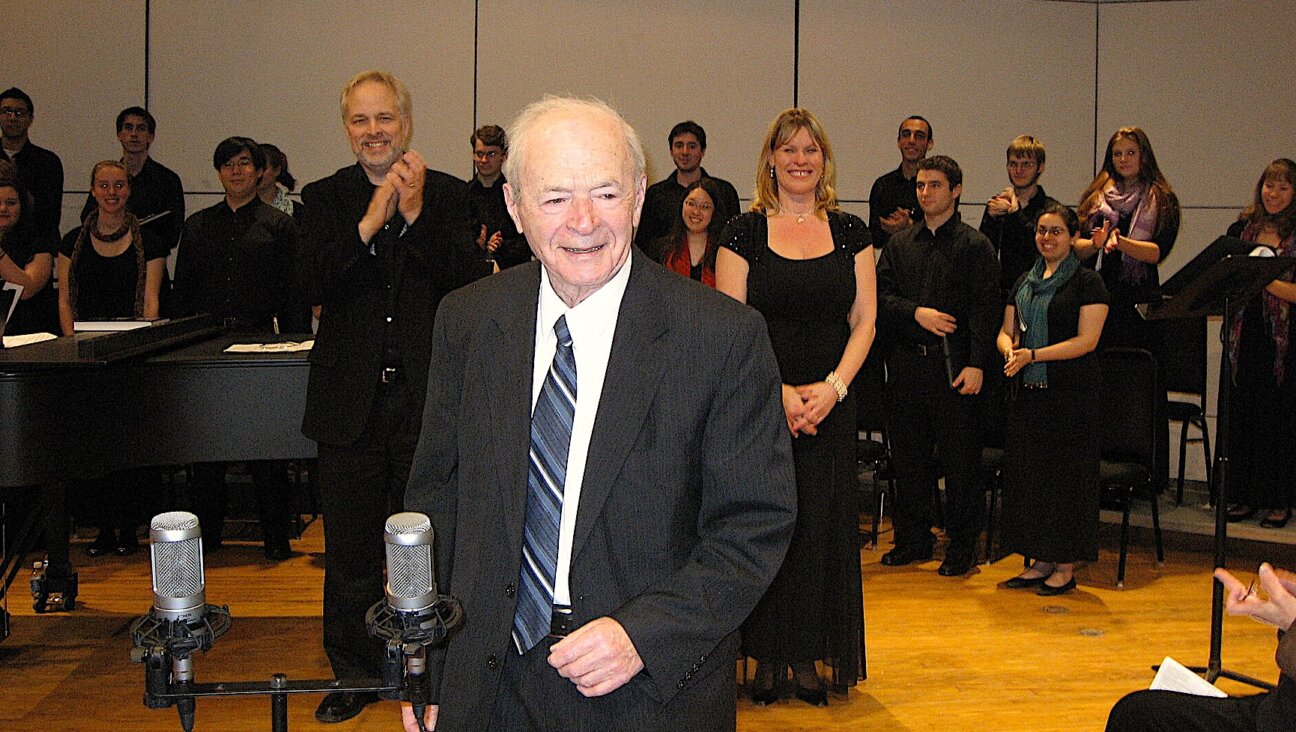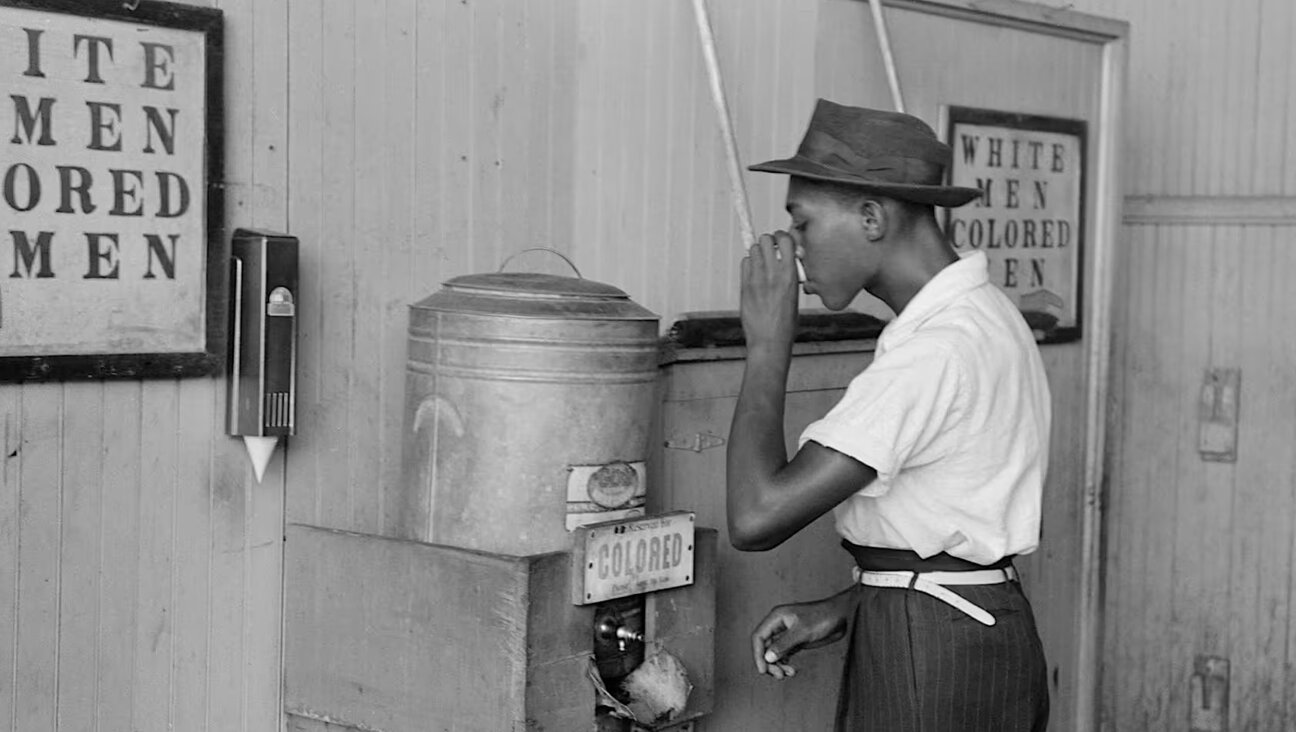Former rabbinical student recalls the moment his belief in the Lubavitcher Rebbe vanished
Yossi Newfield was a firm believer until a former teacher pointed out what Maimonides had written about the requirements for the messiah.

Graphic by Angelie Zaslavsky
It was a muggy summer morning in Melbourne, Australia.
Following the Shachris (morning) service, my fellow rabbinical students and I made our way to the yeshiva dining room. Knowing that we wouldn’t have our usual study session the following day as it was the tenth of Teves, a fast day, we discussed possible plans for the day. I was considering staying in bed with a book, when all of a sudden I caught sight of my former high school Talmud teacher Rabbi S., from Brooklyn, New York. I was startled to see him in Melbourne and wondered what brought him to Australia in the middle of the school year.
It was 2002, only eight years since the passing of our Rebbe, Rabbi Menachem M. Schneerson. At the age of 21, I had enrolled in the prestigious year-long Chabad Rabbinical Ordination program in Melbourne. Since it was customary for all eligible Chabad students to attain rabbinical ordination prior to marriage, I reasoned, what better place to study for ordination than Melbourne whose ordination program was sponsored by Chabad mogul Joseph Gutnick and was reputed to have excellent teachers. Since a number of close friends were going to be in the program, it was only natural for me to join them.
And so I did. For most of the day, my friends and I spent long hours studying the difficult sections of the Shulchan Aruch which dealt with the laws of kashruth. However, in our spare time, we often found ourselves talking about our Rebbe and what he meant to us. Despite his passing, my friends, family and the larger Chabad community firmly believed that he was the Moshiach, or the Messiah. That the Rebbe would return as the Moshiach was as clear as the sun rose every morning; it made no difference that he was no longer alive.
Some Chabad followers even denied that the Rebbe had died at all, since the Moshiach can’t die. But I had a nagging feeling that my former high school teacher, Rabbi S., was not comfortable with this notion. Not that he ever shared his beliefs, or lack of belief, with high school students like me at Mesifta Oholei Torah in Crown Heights, Brooklyn. On the contrary, Rabbi S. kept his personal beliefs to himself, lest he jeopardize his employment in the fervently Messianic yeshiva.
At Oholei Torah Mesifta, we had two teachers; one taught us Talmud for the majority of the day while the other taught us Chabad theology in the early morning and late evening hours. Rabbi S. was the Talmud teacher. Upon seeing him in Melbourne, it occurred to me that this might be a good opportunity to have him explain his beliefs to us rabbinical students.
After inquiring about his arrival in Melbourne, I found out that he had come to attend a bar mitzvah of his friend’s son. I asked him if he could give a lecture on the issue of the Rebbe’s Messianic identity the next day, while we were fasting. He agreed at once and we set the class to begin at 11 AM. I assumed Rabbi S. was ready to give the presentation to us at that time because he was 10,000 miles away from Chabad Headquarters and from his place of employment in Brooklyn, New York. Being on the other side of the world seemed to have given him the space to speak his mind.
The following day, my fellow fifteen rabbinical students and I made our way to the designated room for Rabbi S.’s lecture. Since the leaders of our program didn’t officially sanction the class, I arranged for it to be held on the top floor of our study synagogue, which was built to replicate the Rebbe’s synagogue at 770 Eastern Parkway in Brooklyn.
Rabbi S. began by explaining how the Rambam (Maimonides) was the only rabbinic decisor to matter when it came to issues of the Messianic Age. Maimonides concluded his magnum opus, “Mishneh Torah,” with two chapters on the enigmatic events of the Messianic Age, where he lay out the criteria to discern whether the purported Messiah is in fact a legitimate Messiah or an imposter. Following the criteria, which include building the Temple in Jerusalem and gathering all the Jews back to Israel, Maimonides states the following:
“If he did not succeed to this degree or was killed, he surely is not the redeemer promised by the Torah. Rather, he should be considered as all the other proper and complete kings of the Davidic dynasty who died. God caused him to arise only to test the many, as Daniel 11:35 states: ‘And some of the wise men will stumble, to try them, to refine, and to clarify until the appointed time, because the set time is in the future.’” (Rambam, Mishneh Torah, The Laws of Kings and Their Wars, Chapter 11:4).
After quoting the Rambam, Rabbi S. became animated and declared: “You see, the Rambam is very clear! Since the Rebbe did not build the Temple in Jerusalem and gather all the Jews back to Israel prior to his death, then he is not the long-awaited Messiah. An honest reading of Maimonides leaves no doubt that the Rebbe’s death disqualifies him from being the Messiah.”
A silence fell over the room. With one line from Maimonides’ Mishneh Torah, Rabbi S. had openly declared that our most cherished belief in the Rebbe’s Messianic identity post-death was misguided and invalid. If the Rebbe wasn’t the Messiah, it meant that he actually died. And if he died, then by definition we didn’t have a Rebbe. That thought shook us to the core. Unable to refute Rabbi S.’s reading of Maimonides, my fellow rabbinical students picked themselves up, one by one, and left the room. They understood all too well the implications of giving up the belief in the Rebbe’s Messianic identity. All they could do is walk out and pretend they never heard Rabbi S.’s heretical presentation. I wanted to walk away too; yet, I stayed put. I knew Rabbi S. personally from my year studying Talmud with him in 1996. I trusted his judgment and Talmudic expertise. If he truly believed that the Rebbe wasn’t the Messiah, then he must be right.
The lecture dragged on for another hour or so. By the time it was over, I was one of the only students left. While I was glad to have finally learned Rabbi S.’s true belief regarding the Rebbe’s Messianic identity, the truth stung. I felt defeated and alone. If the Rebbe wasn’t the Messiah, how could I go on living as a Chabadnik? The mere thought of leaving Chabad, of being alone without a Rebbe, terrified me.
But something had to give. I realized that if the price of having a Rebbe meant that I had to continue believing he was the Messiah, then I had no choice but to let go of that belief. Sure, it would have been easier to walk out of the lecture as my fellow students did, but I couldn’t continue believing in a myth.
In the weeks and months ahead, I began visiting the local public library on a regular basis. Without a living Rebbe, I felt utterly lost since my ten years of intense Talmud study now seemed insignificant. Searching for guidance and a new direction, I read I. B. Singer’s “the Slave,” Philip Roth’s “the Counterlife,” and Henry Roth’s, “From Bondage.” I read a biography about Albert Einstein and a few volumes by the controversial British Rabbi Louis Jacobs. By the time my year in Melbourne was over, I knew there was no going home.

















